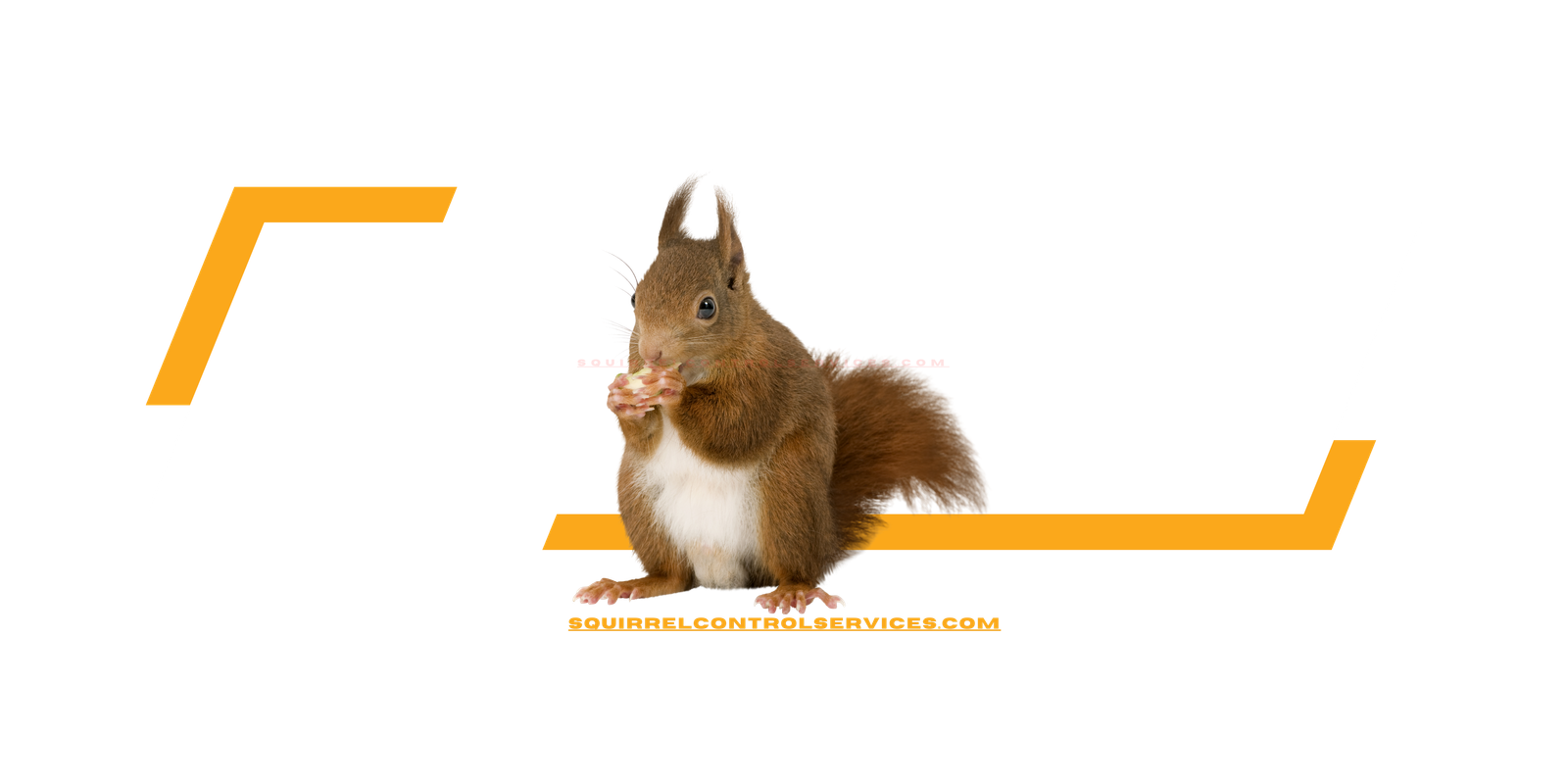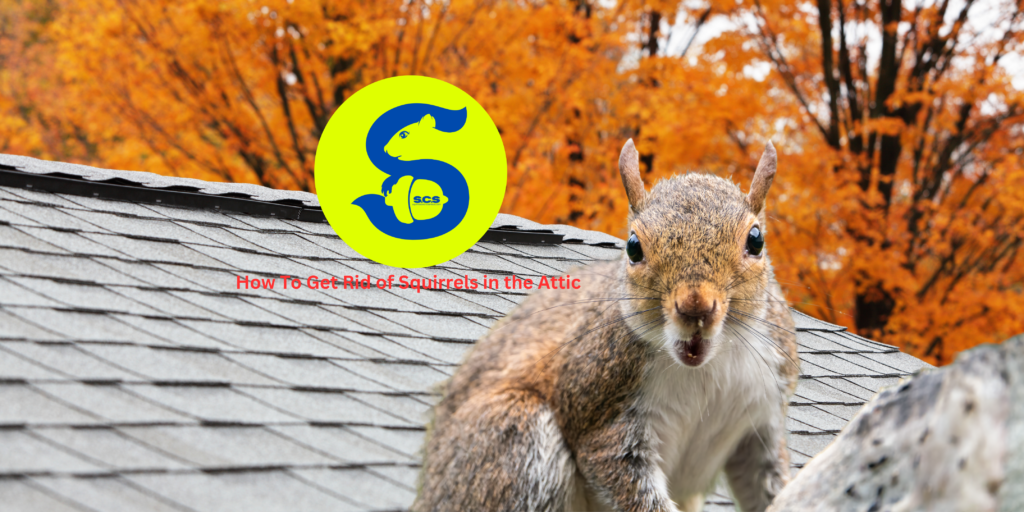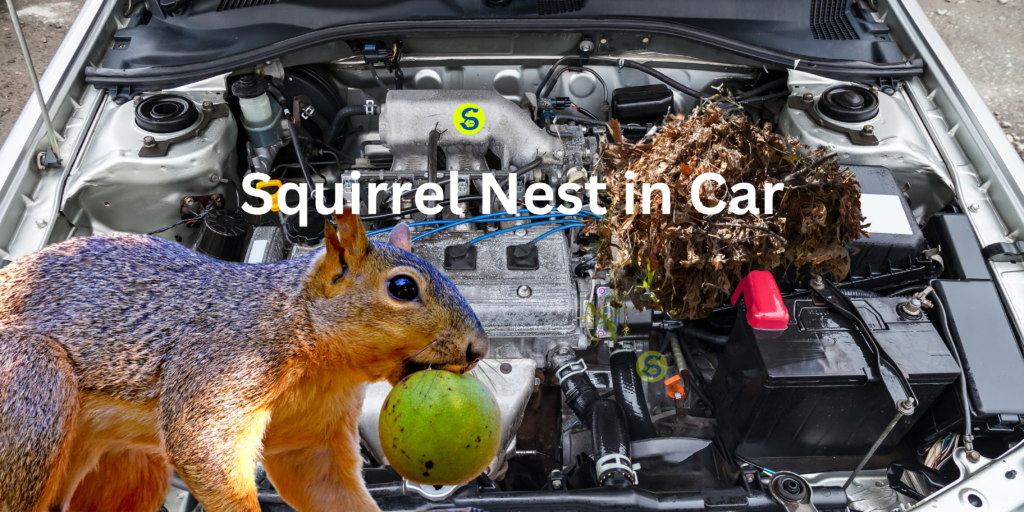Chipmunks Vs. Squirrels: What’s the Difference?
Differences Between Squirrels and Chipmunks:
Physical Appearance:
- Squirrel:
- Larger in size, with a body length ranging from 9 to 12 inches, not including the tail.
- Have a bushy, long tail that is almost the same length as their body.
- Typically, they have solid-coloured fur, which can be gray, red, brown, or black, depending on the species.
- Chipmunk:
- Smaller in size, with a body length ranging from 4 to 6 inches.
- Have a shorter, less bushy tail.
- Display distinctive stripes on their backs and faces, usually brown and white.
Behaviour and Habitat:
Squirrel:
- Spend most of their time in trees, building nests called dreys.
- Have a varied diet that includes nuts, seeds, fruits, and sometimes bird eggs.
- Active during the day, particularly in the morning and late afternoon.
Chipmunk:
- More ground-dwelling, often burrowing into the ground to create their homes.
- Primarily feed on nuts, seeds, fruits, and insects.
- Known for their cheek pouches, which they use to carry food to their burrows.
- Chipmunks enter a state of hibernation during the winter months, waking periodically to eat from their stored food.
Ever wondered about the furry creatures scurrying around your backyard? Squirrels and chipmunks are common sights, but how different are they? Understanding these differences can enhance your appreciation of these fascinating animals and help you better coexist with them.
Physical Characteristics of Squirrels
Size and Body Shape
Squirrels are generally larger than chipmunks. While squirrels can grow up to 20 inches long, including their tails, chipmunks are much smaller, usually around 8 to 10 inches. Squirrels have slender, elongated bodies with longer limbs, whereas chipmunks are more compact with shorter legs.
Colour and Markings
Squirrels typically come in shades of gray, brown, and sometimes black or white, depending on the species. For example, the eastern grey squirrel is known for its gray colouration. On the other hand, red squirrels have distinct physical characteristics, including their reddish fur and smaller size than grey squirrels. Chipmunks, on the other hand, are known for their distinctive stripes. They have five dark stripes running down their backs, separated by lighter brown or gray fur, making them easily recognizable by their striped fur.
Tail Differences
One of the most noticeable differences is in their tails. Squirrels use long, bushy tails for balance, warmth, and communication. Chipmunks have shorter, less bushy tails that are more slender and less prominent.
Habitat and Range
Geographical Distribution and Squirrels in Canada
Squirrels are widespread across many parts of the world, particularly in North America, Europe, and Asia. The Siberian chipmunk is unique as it resides mainly in Asia and has also been introduced to Europe. They thrive in forests, parks, and urban areas. Douglas squirrels, found in Canada, are distinct from red and grey squirrels and are categorized within the broader context of tree squirrels in Canada. Chipmunks are primarily found in North America, with a few species in Asia.
Preferred Habitats
Squirrels are versatile and can live in various environments, from dense forests to city parks. They often build nests in trees. Chipmunks prefer wooded areas and are known for their complex underground burrow systems, where they store food and
Behaviour and Lifestyle
Diet and Foraging Habits
Squirrels have a varied diet, including nuts, seeds, fruits, insects, and bird eggs. Ground squirrels typically inhabit grassy areas, construct burrows, and are significant agricultural pests due to their feeding on crops and potential nuisance in gardens. They are known for burying nuts, which they may retrieve later. With their unique skin flaps, flying squirrels glide between trees and prefer dense woodlands, foraging year-round for food. Chipmunks primarily eat nuts, seeds, fruits, grains, and insects. They have cheek pouches that allow them to carry food back to their burrows.
Activity Patterns
Both squirrels and chipmunks are diurnal, meaning they are active during the day. However, squirrels are more likely to be seen throughout the day, while chipmunks may be more active during the early morning and late afternoon.
Social Behaviour
Squirrels can be social, often seen interacting with each other, especially in urban settings. Chipmunks are generally solitary, except during the mating season or when raising young.
Squirrel Removal Cost
- Removal: One-Way Door, Trapping
- Repair: Shingles, Vents, Soffit
- Prevention: Reinforce Vulnerable Areas
Nesting, Burrowing, and Chipmunks Hibernate
Squirrel Nests
Squirrels build nests, called dreys, in trees. These nests are made from leaves, twigs, and other natural materials. They may also take shelter in tree cavities.
Chipmunk Burrows
Chipmunks create intricate burrow systems that feature multiple entrances. These burrows can be quite deep and include separate chambers for sleeping, storing food, and defecation.

Reproduction and Lifespan of Squirrels
Breeding Seasons
Squirrels typically breed twice a year: in late winter, early spring, and midsummer. Chipmunks also have two mating seasons: spring and late summer.
Gestation and Offspring
The gestation period for squirrels is about 44 days, resulting in litters of 2-6 young. Baby squirrels are particularly vulnerable during their early weeks of life and rely heavily on their mothers for protection and care. Chipmunks have a slightly shorter gestation period of around 30 days, with litters typically consisting of 4-5 pups.
Lifespan and Survival Rates
Squirrels in the wild live around 6-12 years, while chipmunks generally have shorter lifespans of about 2-3 years due to predation and environmental factors.
Communication
Vocalizations
Squirrels communicate using a variety of sounds, including chattering, barking, and screeching. Chipmunks are also vocal and known for their sharp chirps and trills.
Body Language
Squirrels use their tails for communication, flicking them to signal danger or agitation. Chipmunks use body language less overtly, relying more on vocal signals.

Interactions with Humans
Common Encounters
Squirrels are often seen in backyards, parks, and urban areas and may approach humans for food. Chipmunks are shyer and tend to avoid direct contact with humans.
Impact on Gardens and Homes
Squirrels can be a nuisance by raiding bird feeders, digging up gardens, and sometimes nesting in attics. Eastern grey squirrels, in particular, are known for their adaptability to urban environments and can often be seen foraging in gardens and targeting bird feeders. Chipmunks can also be problematic because they dig burrows near foundations and steal garden seeds.
Conservation Status
Threats to Squirrels
Squirrels face threats from habitat loss, predation, and road accidents. Grey squirrels, in particular, impact native squirrel populations by outcompeting species like red squirrels and Douglas squirrels. They are highly adaptable to urban environments, and urbanization and deforestation are significant factors affecting their populations.
Threats to Chipmunks
Chipmunks are vulnerable to predators such as hawks, snakes, and domestic cats. During the mating season, female chipmunks briefly join males before separating again, making them particularly vulnerable. Habitat destruction and climate change also threaten their survival.
Conservation Efforts
Efforts to conserve squirrel populations include habitat preservation and urban wildlife programs. Chipmunks benefit from similar conservation strategies, focusing on maintaining forested areas.

Interesting Facts
Unique Traits of Squirrels
Squirrels have excellent memory and spatial recognition, helping them locate buried food. Squirrels in Canada, such as the eastern grey and red squirrels, exhibit unique physical characteristics and behaviours, including their impact on backyard bird feeders and nesting habits. They also play a crucial role in forest regeneration by dispersing seeds.
Unique Traits of Chipmunks
Chipmunks are known for their high-pitched alarm calls and ability to hoard large amounts of food. Prairie dogs, like chipmunks, are members of the squirrel family and share a branch on the family tree with other rodents like woodchucks. Their burrow systems can be quite elaborate, showcasing their engineering skills.
Chipmunks’ burrow systems showcase their impressive engineering skills.
Comparative Trivia
While it’s not typical for squirrels and chipmunks to hibernate, chipmunks enter a state of torpor, waking periodically to eat from their stored food, whereas squirrels remain active year-round. Tree squirrels, in particular, prefer nesting in dense woodlands and build their nests high up in trees, unlike ground-dwelling squirrels.

Conclusion
Squirrels and chipmunks, though similar in some ways, are distinct in many aspects, from physical characteristics to behaviour and habitat preferences. Understanding these differences can deepen our appreciation for these creatures and highlight their unique roles in the ecosystem.
FAQs
What are the main diet differences between squirrels and chipmunks? Squirrels have a more varied diet, including nuts, seeds, fruits, and occasionally animal matter. Chipmunks primarily eat nuts, seeds, fruits, and grains, utilizing their cheek pouches to transport food.
How can you tell a squirrel nest from a chipmunk burrow? Squirrel nests, or dreys, are built-in trees using leaves and twigs. Chipmunk burrows are underground with multiple entrances and chambers for various purposes.
Are squirrels or chipmunks more likely to enter homes? Squirrels are more likely to enter homes, especially attics, searching for shelter. Chipmunks usually stay outdoors in their burrows.
What are the biggest threats to squirrel and chipmunk populations? Squirrels face threats from habitat loss, predation, and road accidents. Predators, habitat destruction, and climate change threaten chipmunks.
How do squirrels and chipmunks communicate? Squirrels use a variety of vocalizations and tail movements to communicate. Chipmunks primarily use vocal signals, including chirps and trills, to alert others of danger.














